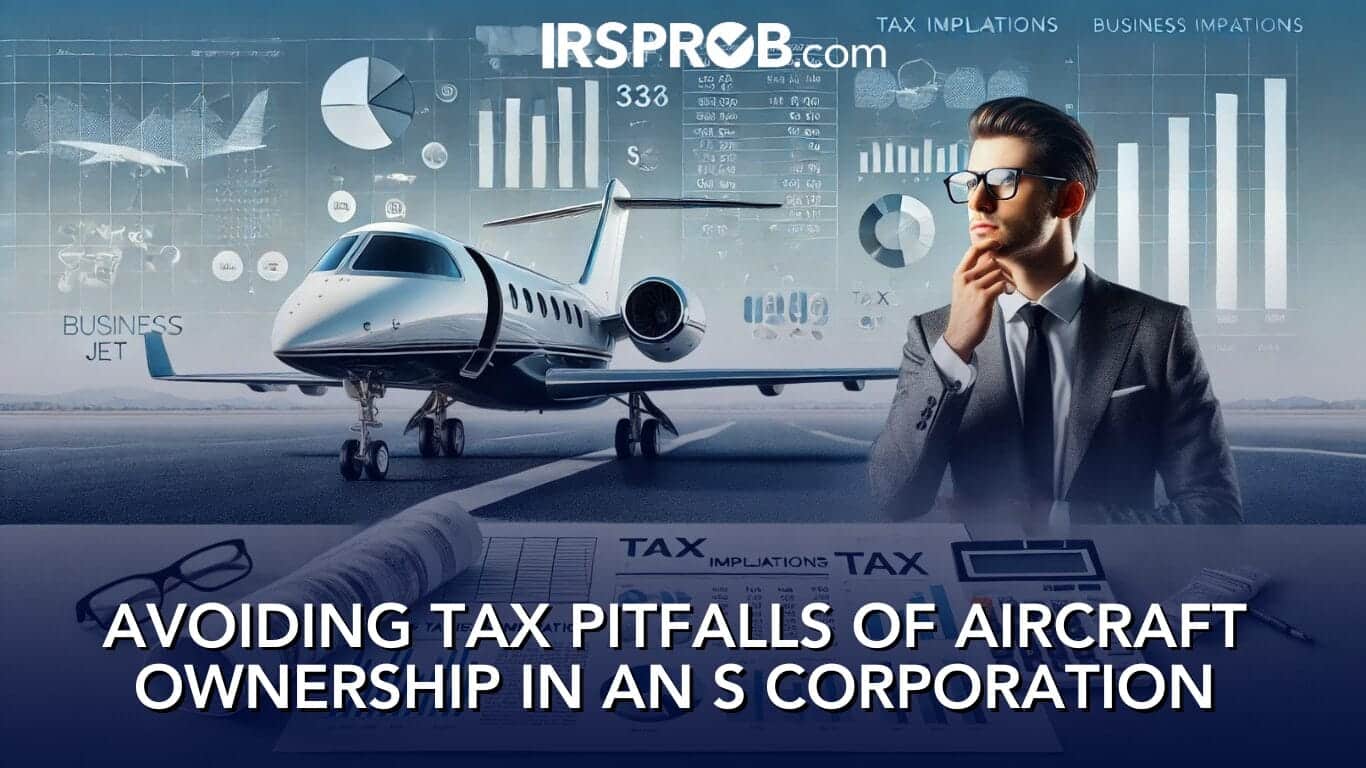
Aircraft ownership can be an attractive proposition for business owners, offering convenience, flexibility, and potential tax benefits. However, when structured through an S Corporation, the tax implications can become complex and, if not properly managed, can lead to significant pitfalls. In this blog post, we’ll explore the key tax challenges associated with aircraft ownership within an S Corporation and provide strategies to navigate these complexities effectively.
1. Basis Limitations: The Impact on Your Tax Deductions
One of the main benefits of owning an aircraft through a business entity is the ability to claim significant tax deductions, particularly through first-year bonus depreciation or Section 179 deductions. For example, purchasing a $1 million aircraft might allow you to claim up to $680,000 in deductions in the first year, which could result in substantial tax savings. However, when using an S Corporation, these tax savings could be significantly limited due to basis limitations.
What’s the Issue? In an S Corporation, your ability to deduct losses is typically limited to your basis in the stock and any shareholder loans to the corporation. Unlike in a partnership structure, third-party debt does not increase your basis in an S Corporation, which can severely restrict your ability to claim losses.
Tax Planning Tips:
- Avoid Debt Financing: Consider financing the aircraft purchase with cash rather than debt. This avoids the complications associated with basis limitations.
- Personal Loan Strategy: If additional funds are needed, consider taking out a personal loan and then lending those proceeds to the S Corporation. This can increase your basis and allow you to claim the desired tax deductions.
2. Depreciation Recapture: The Risk of Increased Tax Liability
Depreciation is a powerful tax tool, especially for high-cost assets like aircraft. However, the IRS imposes strict rules on how and when you can claim depreciation, particularly in an S Corporation structure. If the business use of your aircraft drops below 50%, you could face depreciation recapture, which would increase your taxable income and potentially erase any upfront tax benefits.
What’s the Issue? Aircraft are considered “listed property” under IRS rules, meaning they are subject to specific depreciation recapture rules if business use drops below 50%. This recapture would require you to repay some or all of the depreciation claimed in prior years, potentially at a higher tax rate.
Tax Planning Tips:
- Maintain Business Use Above 50%: To avoid depreciation recapture, ensure that your aircraft is used predominantly for business purposes, maintaining the use above 50%.
- Consider the Timing of Aircraft Transfers: If you eventually want to own the aircraft personally, be aware that transferring it from the S Corporation to yourself can trigger a taxable event. Plan the timing of such transfers carefully to minimize tax liability.
3. Cost-Sharing Arrangements: The Inflexibility of S Corporations
Aircraft ownership is expensive, and many business owners look to share the costs with partners or other business entities. However, the S Corporation structure is inflexible when it comes to allocating costs based on usage. All income and expenses must be allocated pro-rata according to ownership, which can create problems if ownership percentages don’t match actual usage.
What’s the Issue? If you and a partner own an aircraft through an S Corporation and want to share costs based on use (e.g., one owner uses the aircraft 80% of the time and the other 20%), the S Corporation structure doesn’t allow for such flexibility. Instead, all costs and benefits must be allocated based on ownership percentages, which might not reflect actual use.
Tax Planning Tips:
- Consider a Partnership Structure: A partnership or LLC structure allows for more flexible allocation of costs based on actual usage, making it a better choice if you plan to share ownership and expenses.
Conclusion
Owning an aircraft through an S Corporation can seem advantageous at first, but the potential tax pitfalls require careful planning. By understanding the limitations of basis, the risks of depreciation recapture, and the inflexibility of cost-sharing arrangements, you can make informed decisions that optimize your tax situation and avoid unexpected liabilities.
Additional Resources:
- IRS Publication 946: Provides detailed information on how to depreciate property, including aircraft.
- IRC Section 280F: Details the rules around listed property, including the business use test for aircraft.
For tailored advice on aircraft ownership and tax strategy, especially if you’re considering an S Corporation, consult with a tax professional who understands the intricacies of tax law as it applies to your unique situation.







